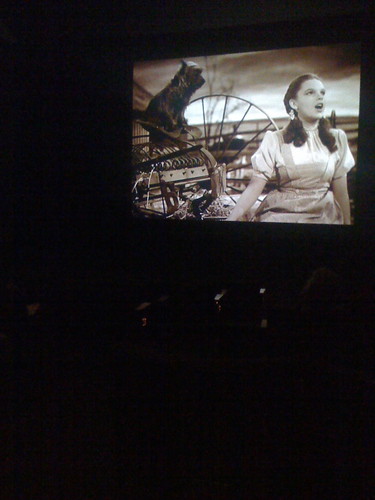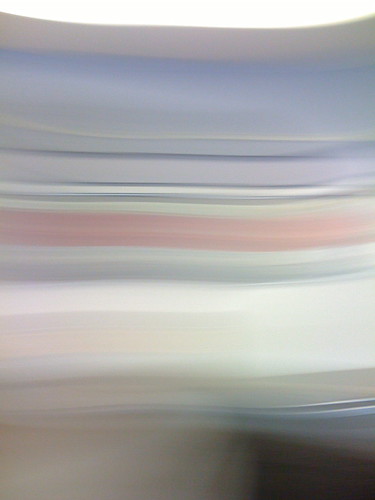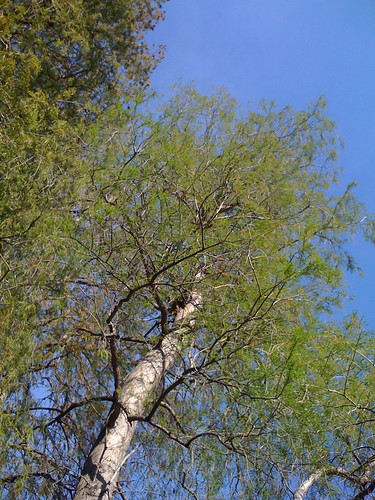Actual updates will be here shortly. In the meantime, the Black Cloud is featured on the Buckminster Fuller Challenge site today. Please check it out. (Aclima is shortlisted as a semi-finalist for the BFI Challenge Award this year. The winner will be announced in June.)
Category Archives: education
“The Ending Wasn’t Really Fair”: The 400 Blows, The Wizard of Oz, and Envisioning Social Equity through Film

Over the past two weeks, approximately forty students from Manual Art have participated in a film intersession course I am co-teaching with Peter Carlson. These students have watched a handful of universally lauded films, critiqued them, and created & produced their own films. And although Peter and I will be writing in more detail about the pedagogy and instructional experiences of our current intersession film class, I wanted share a few snippets of what makes this such a fun class to be a part of.
- Location Location Location: While our first class met in a large room at Manual Arts High School, the rest of the classes have met at UCLA the past two weeks. Though students were initially concerned about the nearly two hour public-bus commute to the other side of the city, the experience of holding the class at the university has a powerful effect on the students. Utilizing UCLA’s classrooms, labs, and film school has helped expose students to the opportunities of four-year universities and has made this period much more an experience than simply an elective class. Further, though Peter has taken the bus with many of the students in the morning, many students are getting to campus early and exploring. It’s been fun walking through the sculpture garden in the morning and encountering kids wandering and relaxing.
- Production: Each week, student groups are required to create a short film. These films are based on the themes and techniques studied in class that week. Last Thursday as our guest instructor Daye Rogers worked with students editing their films, Peter and I walked across the campus. It was thrilling to see the school sprinkled with our students collaborating, planning, and shooting their films. The breakneck pace of the class has student’s working creatively, thinking technically, and getting a pretty solid foundation in digital editing thanks to Daye’s help. (There will be a student film festival at Manual Arts on April 3rd and the films will likely be available online soon – details will follow.)
- Problem-Posing & Social Analysis through Film: Of course, the experiences of discussing and critiquing the films in this class have been powerful for all of us. Though the history of cinema is generally one told and produced by an overwhelmingly white and male demographic, we started our class by screening Children of Men to help frame the more diverse, global community working in film today. A hefty number of guests continue to visit the class discussing their work in film and academia. However, the conversations that arise as a result of the films are what most engage the students. Today, for instance, students analyzed how the ending of 400 Blows may yield the kind of ambiguity that is absent from the definitive door slam that concludes The Godfather. Further, students looked at the sexual objectification of women in Truffaut & Coppola’s films, and contrasted it with aspects of The Wizard of Oz. Questions of freedom, liberation, and responsibility were discussed in looking at the treatment of children in 400 Blows and robots in Blade Runner. Through these small and large group discussions, students are naturally guiding themselves towards critical analysis of their communities. These films are helping students reveal universal commonalities of their lived experiences.
Again, I will be posting an update about the upcoming film festival, Peter and I will be drafting a more comprehensive description of the work, and I am hoping to rope in a few students to author posts about their experiences as well. Stay Tuned.
“You Are Making That Barrel Explode. Right Here. Right Now.”
The video below was filmed shortly before the Manual Arts members of the UCLA Council of Youth Research made one of their most powerful presentations to parents, teachers, district officials and peers at the Downtown Labor Center two weeks ago. I don’t want to add any lengthy exposition here other than to highly encourage you to simply click the play button below.
Katie’s Council of Youth Research Pep Talk from Antero Garcia on Vimeo.
(Katie, thank you for being willing to share this moment with others.)
Game Play/Real Play & We Live In Public
I wanted to share a couple of recent videos that I’ve been rewatching.
First, while I don’t agree with all of Jane McGonigal’s arguments, I’m genuinely excited by her recent TED talk. At this point, I am strongly aligned with the idea of connecting game play to real world change. You could do a lot worse than spend 20 minutes watching Margolis’ presentation.
I’ve been following Jane’s work since Greg Niemeyer showed me World Without Oil (A bit of trivia: Greg was also one of the members of Jane’s dissertation committee). Her article, “Why I Love Bees” fits directly into my research on the Black Cloud. Similarly, Evoke seems like an interesting premise. And while I understand what she’s doing with her argument by contrasting the time youth spends playing video games with the time they spend in schools, I think this is where a lot of researchers are missing a big opportunity. As a field, we continue to look at the informal environments for game play and research. It’s easier to do so – a select group of interested individuals, less controlled curriculum, easier access issues, etc. However, think about how the power of game play for change could be compounded within formal learning environments. I’m working on developing material around this within my classroom, and expect game play to fit somewhat prominently into my dissertation. So if it sounds like I’m grandstanding or being a bit presumptuous here, it’s more personal throat-clearing than anything else.
Second, I just saw We Live in Public and found it to be an absolutely compelling and terrifying documentary. I’m not clear about what disqualified it for an Oscar nomination, but think it could have given The Cove a run for its money. The foundational arguments about privacy, surveillance and our culture’s relationship with the media are extemely prescient. As I continue to think about how student-generate media products will be created, shared, and assessed within my classroom, these are the topics I am concerned about. Ownership of data, of our lives, and of conceptions of propriety is in flux and the experiments that Josh Harris challenges us to face this fact.
His next project sounds equally as preposterous as past efforts, and I’m interested (if not extremely wary) about what will transpire if he gets the funding for this. Though I encourage you to watch his pitch below, I highly recommend seeking out and viewing We Live In Public for a better sense of context.
Stop It: Our Future, A Threat

[From the introduction of Stop It: Our Future, A Threat ]:
At the beginning of this quarter, the students in my third period American Literature class decided to engage in a focused inquiry on the history of South Central Los Angeles from a literary lens. One of the texts that our class read was Twilight: Los Angeles, 1992, by Anna Deavere Smith. This documentary theater project was based around a series of interviews with key witnesses and individuals related to the Rodney King Riots. Using Smith’s model of including word-for-word interviews, our class attempted to document the ideas, questions, and frustrations that the Manual Arts community is facing in today’s economic crisis. These monologues interweave various language practices and, though some of the grammar will occasionally confound, reflect the naturally occurring poetry of everyday human speech. This work is offered not as a definitive statement of the effect of the budget cuts in South Central, but as an opportunity to engage in a continuing dialogue with the voices of the present.
You may download a copy of this work here.
Within a week and a half, my third period class identified a topic for inquiry, interviewed, edited, and arranged an entire play in six thematic acts. The title, the individuals interviewed, and the sequencing were all decided democratically within the classroom. The work’s blemishes and typos and occasional faltering in clarity are part of its charm. Students will be introducing and discussing this work to the Manual Arts community on Tuesday at lunch. After finishing the play, students reflected on the varied viewpoints represented and identified next steps for our collective research. This work will be continued when the students return on-track in May.
On Focusing on “Learning” At the Digital Media and Learning Conference

Overall, I can say I was both impressed and pleased with the way the Digital Media and Learning Conference went. It was certainly one of the more exciting conferences I’ve dragged myself to in the past few years. I think the interdisciplinary nature of DML made for much richer conversations than the kinds I find myself falling into at ed conferences.
I’ve left with a huge list of people to stay connected with and a ton of areas for collaboration with my students and colleagues at Manual Arts. In particular, many of the programs taking place at USC are right up the alley of the work I see our 9th grade academy tackling come July. Would love to build a more extensive relationship with USC that extends beyond the generally small (and non-b-track) opportunities of the NAI program.
I left with three general critiques to keep in mind for next year’s conference:
- For a conference focused around “Learning,” there was a dearth of actual practitioners. In addition to my presentation, I know my colleague Veronica Garcia did an amazing job presenting with her students. But how many other teachers presented, let alone even attended? This is a general critique I have of other conferences too – AERA especially. How are we expecting teachers to hear about these conferences and opportunities? What are we saying about the role of schools in digital practices if they aren’t a part of these conversations? And if the bulk of a conference is during “school days” are we making it that accessible to teachers when funding for substitutes is tight?
- Some of the panels were positively bursting with too many people. The Saturday evening symposium especially had too robust a group with far too much important information to share to be adequately covered in the short time. I admire the effort here, but would have preferred if each person was given a larger slot of time and used the Saturday session to really see dialogue across the various interdisciplinary perspectives.
- Like my first critique, the bulk of the presentations I went to and the two keynotes focused on the informal practices of youth and what happens outside of schools. I get that this is where most of these practices are happening. I’ve written elsewhere about how schools stifle these kinds of digital practices. However, why aren’t we demanding and discussing the empirical research about what is and should be within a school? Where is the ongoing conversation about what needs to happen in schools? I think this, in particular, would have been aided by the presence of more teachers. Instead, I think I came across as the whiny, complaining teacher on the DML twitter feed (speaking of which, I’m going to unabashedly wave my n00b flag and say that this conference and the #dml2010 hashtag really helped me get twitter – the conversations and dialogue there were a great experiential area of development for me).
Again, I need to emphasize that this was a really great conference. I’m excited about being connected next year. I hope that there will be more of my colleagues in the room next time (and keeping it free will be key for getting classroom teachers to be willing to venture out with the budget crisis nowhere near an adequate conclusion).
Digital Media and Learning Presentation
I’ll have some reflections on the DML conference later on. For now, I wanted to share the slides from our presentation below.
Also, if you are interested, Sheryl Grant live-blogged our session. You can read a great overview here.
Meanwhile, data on air quality at the conference has been collected over the past two days at blackcloud.org. The sensor will be back in South Central on Monday.
Conference Season – Digital Media and Learning

I’m in the process of slowly weaving various conferences into my teaching/studying/dog-walking schedule.
This Friday I’ll be participating in the Digital Media and Learning Conference in San Diego. I’m speaking as part of a session titled “Orality, Pedagogy, and New Media: How Children Develop Self-Awareness and Collective Consciousness.” I’m pasting the info below. Registration is closed, but if you’re heading down there anyways, drop me a line.
Orality, Pedagogy, and New Media: How Children Develop Self-Awareness and Collective Consciousness
Location: Room 4004
Chair: Antero Garcia (University of California, Los Angeles)
Participants: Antero Garcia (University of California, Los Angeles), Greg Niemeyer (University of California, Berkeley), Davida Herzl (Aclima), Dehanza Rogers (Cal State Northridge), Scott Ruston (Arizona State University, Hugh Downs School of Human Communication)
An analysis of the convergence of orality, pedagogy, and new media, this session looks at how new technologies are still rooted in oral culture and the implications of this distinction on pedagogy. Presenters will discuss and provide interactive opportunities around ways these themes tie into game play, literacy development, data aggregation, and DIY filmmaking. Alternate reality environmental game, the Black Cloud, will anchor part of this presentation and allow real-time prediction and aggregation opportunities for participants. Similarly, session participants will engage in cell-phone literacy demonstrations, help author a FlipCam documentary, and engage in traditional dialogue. Further, presenters will examine the role of radical transparency and collective eco-intelligence as they disrupt existing measuring systems. As social media proliferates and cell phones continue to overcome barriers within classrooms and informal learning environments, the role of orality within education continues to be disregarded. Reexamining new media’s emphasis of an oral culture through text messages, status updates, and twitter feeds, this interactive symposium provides analysis of orality as it plays out in gaming, cell phone applications in a high school context, data aggregation, and the role of documentary filmmaking. Looking into the connections between John Dewey and Walter Ong, this symposium and its interactive dialogue help guide practitioners and researchers towards expanded media and pedagogical opportunities through orality.
Further down the road, I’ll also be presenting with a group of friends at the Critical Teaching in Action Conference on March 13. The full program is not online yet.
The AERA schedule is up too, but I’m still figuring a few things out.
Optimum Conditions

This is from the booklet of the new Gil Scott-Heron album, which I recommend (though I realize buying CDs kinda puts me in the minority these days):
There is a proper procedure for taking advantage of any investment.
Music, for example. Buying a CD is an investment.
To get the maximum you must
LISTEN TO IT FOR THE FIRST TIME UNDER OPTIMUM CONDITIONS.
Not in your car or on a portable player through a headset.
Take it home.
Get rid of all distractions, (even her or him).
Turn off your cell phone.
Turn off everything that rings or beeps or rattles or whistles.
Make yourself comfortable.
Play your CD.
LISTEN all the way through.
Think about what you got.
Think about who would appreciate this investment.
Decide if there is someone to share this with.
Turn it on again.
Enjoy Yourself.
Gil Scott-Heron
The title track, a cover of a (smog) song, comes across differently after having read this.
The situated moment, the connection with the music as an object (like my current studies of information as a thing), and the duality of music as both individual and collective experience point toward the ways I hope learning can create kinship, enrich identity, reify space as a fluid negotiation. Perhaps music, like dancing and photography, can become a totem of student agency. A totem of a mutual agreement to do away with the hegemonic “rings or beeps or rattles or whistles.” What will make our students want to “turn it on again” when the CD player clicks itself back to its point of origin and we are returned to our uncontested space? What will it take to feel transformed in this space? To feel “new here, again”?
Text message received, 10:04 p.m.
From an anonymous colleague: “I am officially ending my visceral hatred of charter schools. I finally realized that for me to hate charter school teachers is like a Detroit autoworker hating a maquiladora worker. We all get pimped.”